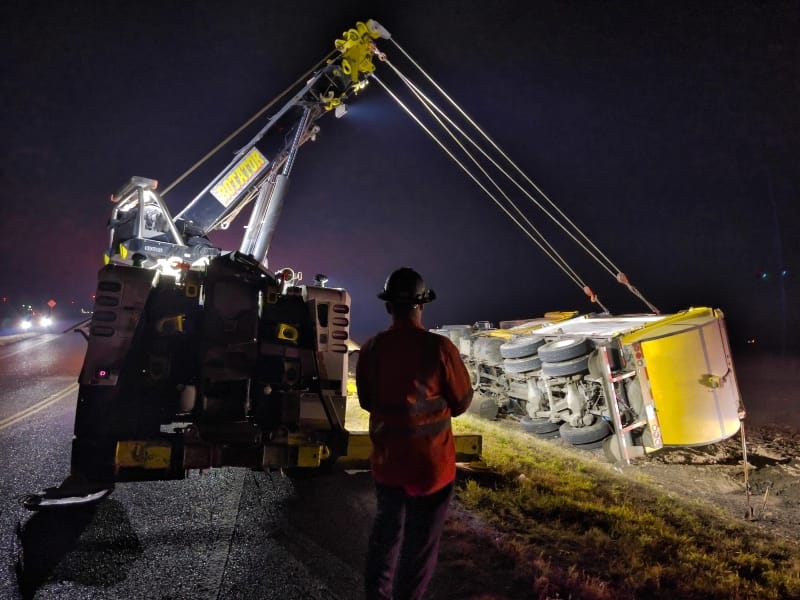Getting Unstuck With Skill and Power
If you’ve ever seen a truck yanked out of deep mud or a car pulled from a ditch and wondered how it’s done, the answer is probably winching. This technique is one of the most useful tools in our towing toolbox—especially in jobs that call for real pulling power. It’s a critical part of many recoveries in the world of Nueces County heavy towing.

What Is Winching?
Winching is the process of using a motor-powered spool of steel cable or synthetic rope to pull a vehicle. Most of our tow trucks are equipped with heavy-duty winches mounted to their frames. The winch pulls the cable in, dragging the stuck vehicle toward the truck—or sometimes dragging the truck and vehicle toward each other, depending on weight and footing.
Key Components of a Winch Setup
- Winch Motor: Provides the pulling force.
- Cable or Rope: Wraps around a drum and extends to attach to the stuck vehicle.
- Hook or Strap: Connects securely to a recovery point.
- Control System: Lets the operator wind or unwind the line safely.
We don’t just hit a button and hope for the best. Our operators consider angle, weight, surface traction, and load distribution before starting any pull. One wrong move can do more damage than good, which is why skill and training matter so much in these recoveries.
When Do We Use Winching?
Winching isn’t something we use in every tow, but it’s absolutely essential in certain cases. Here’s when it becomes our go-to solution.
Off-Road Recoveries
Muddy trails, loose sand, and ditches—these are where winching earns its keep. In the world of Nueces County heavy towing, we regularly help folks who got a little too adventurous off the pavement. A well-placed winch pull can get a vehicle back on solid ground without causing damage.
Accident Scenes
When a car is stuck down an embankment or tangled in guardrails, there’s often no way to tow it from a clean angle. Winching helps us reposition the vehicle so we can move it without further issues. It also helps clear the road faster, keeping traffic moving.
Tight Urban Situations
In tight alleys or parking structures, there’s often no room to maneuver a tow truck in front of a disabled vehicle. Winching lets us slide it out carefully and without causing any scrapes or dents. In Nueces County heavy towing jobs, we’ve seen more than one situation where winching made a tough job possible.
Jackknifed or Overturned Trucks
Heavy-duty trucks that jackknife on the highway can block lanes and cause serious delays. In these cases, winching is vital to reposition or upright the vehicle. These are some of the most demanding recoveries we face in Nueces County heavy towing.
Common Winching Mistakes (and How We Avoid Them)
Here are a few common problems we’ve seen others run into—and how we make sure to avoid them:
- Anchoring to weak points: We always hook into secure recovery points—not bumpers or axles that could snap off.
- Underestimating the load: We calculate total weight before deciding on winch line, angle, and anchor strategy.
- Bad angles: Pulling at the wrong angle can shift a vehicle in dangerous ways. We take time to set up properly.
- Ignoring terrain: We account for mud, sand, gravel, and other traction issues before we start pulling.
Each of these mistakes could result in injuries or damage. That’s why we treat every winching job with the respect and preparation it demands.

Apollo Towing: Your Experts in Nueces County Heavy Towing
Understanding how winching works—and when it’s used—gives people a better idea of what to expect when they call for a tow. It also shows why experience and preparation matter so much in this line of work. Nueces County heavy towing isn’t just about muscle, it’s also about knowledge and timing. So if your vehicle is in a pickle, call Apollo towing for all of your Nueces County heavy towing needs.

